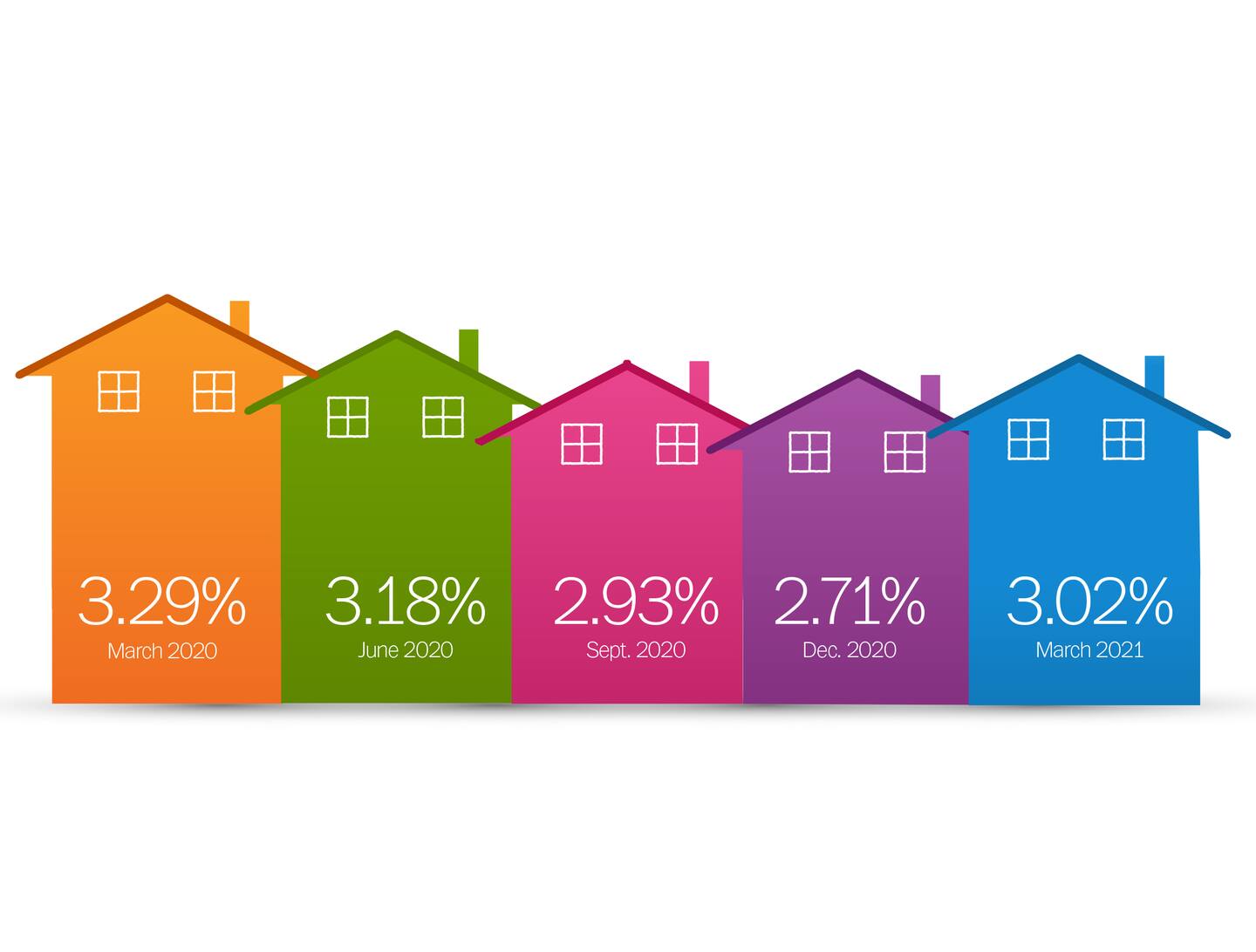Mortgage rates top 3 percent for first time since the summer

The 30-year fixed average, which hasn’t been above 3 percent since late July, has jumped more than 35 basis points since January. (A basis point is 0.01 percentage point.)
Freddie Mac, the federally chartered mortgage investor, aggregates rates from around 80 lenders across the country to come up with weekly national average mortgage rates. It uses rates for high-quality borrowers with strong credit scores and large down payments. Because of the criteria, these rates are not available to every borrower.
Because the survey is based on home purchase mortgages, rates for refinances may be higher. The price adjustment for refinance transactions that went into effect in December is adding to the cost. The adjustment, which applies to all Fannie Mae and Freddie Mac refinances, is 0.5 percent of the loan amount. That works out to $1,500 on a $300,000 loan.
The 15-year fixed-rate average was unchanged at 2.34 percent with an average 0.7 point. It was 2.79 percent a year ago. The five-year adjustable rate average dropped to 2.73 percent with an average 0.3 point. It was 2.99 percent a week ago and 3.18 percent a year ago.
“The Freddie Mac fixed rate for a 30-year loan rose this week,” said George Ratiu, senior economist at Realtor.com. “With the U.S. president indicating that there should be enough covid vaccines available for every American by May, and the U.S. House of Representatives passing additional stimulus in the latest bill, investors retreated from the bond market, driving interest rates higher.”
After retreating from its highest level this year, the yield on the 10-year Treasury came back to 1.47 percent Wednesday. Despite their rapid rise in February, long-term bond yields remain low by historical norms. The 10-year yield is less than half of what it was in 2018, when it was above 3 percent. The pandemic sent it tumbling to a low of 0.55 percent in August. But lately as concerns about inflation heating up mount, the 10-year Treasury yield has rebounded.
“With the US economic outlook becoming more promising, treasury yields are on the rise, but we don’t expect mortgage rates to be heavily impacted since margins are only beginning to normalize to pre-covid levels,” Glenn Brunker, president of Ally Home, said in an email. “There has been a large spread between treasury yields and mortgage rates for the majority of 2020 and into 2021, providing a cushion for mortgage rates even with treasury yields rising. We foresee mortgage rates likely stabilizing, followed by slow upward momentum fueled by an optimistic economic climate and in turn, increased treasury yields.”
Bankrate.com, which puts out a weekly mortgage rate trend index, found the experts it surveyed mixed on where rates were headed in the coming week. Forty-two percent said rates will go up, 33 percent say they will stay the same and 25 percent said they will go down.
Ken Johnson, a real estate economist at Florida Atlantic University, expects them to rise.
“With the next stimulus package winding its way to a conclusion, financial markets are returning to more traditional operations,” he said. “Rising 10-year Treasury yields will result in rising long-term mortgage rates in the coming weeks.”
Michael Becker, a branch manager at Sierra Pacific Mortgage in Lutherville, Md., predicts they will hold steady.
“After a swift sell-off in Treasurys and mortgage-backed securities over the last couple weeks, which caused a spike in mortgage rates, these bonds have found their footing and have rallied a bit this week,” he said. “However, given the increased inflation expectations in markets, it’s hard to see them rallying any further. Hopefully, we will settle into a trading range over the next few weeks. I think rates will be flat for the coming week.”
Meanwhile, mortgage applications were essentially flat last week. According to the latest data from the Mortgage Bankers Association, the market composite index — a measure of total loan application volume — increased 0.5 percent from a week earlier. The purchase index grew 2 percent from the previous week, while the refinance index ticked up 0.1 percent. The refinance share of mortgage activity accounted for 67.5 percent of applications.
“Applications to refinance and buy a home increased modestly last week,” said Bob Broeksmit, MBA president and CEO. “An increase in government purchase applications pulled down the average purchase loan size for the first time since early January, which is an indication of strong demand for lower-priced homes mostly from first-time buyers. Housing supply shortages are most severe in this portion of the market, but interest is high as the spring-buying season commences.”
More Real Estate:






